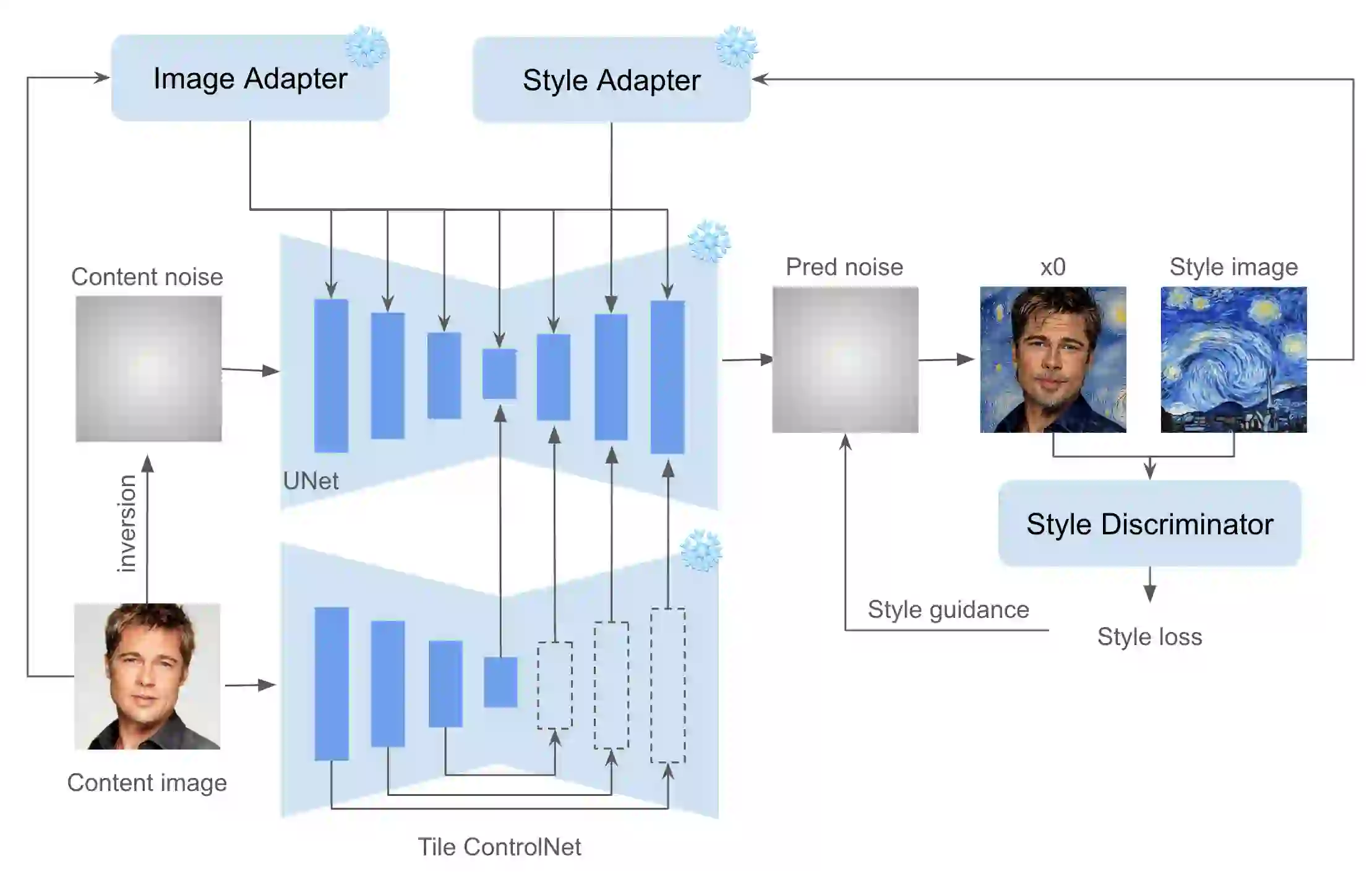
A global image adapter is used to preserve semantic content, such as the identity, gender, and age of individuals.
"InstantStyle-Plus: Style Transfer with Content-Preserving in Text-to-Image Generation" introduces a method for style transfer while preserving content in text-to-image generation.
- Research Background and Objectives Challenges in style transfer: Diffusion models, although powerful in personalized or style-driven applications, struggle to balance content preservation and style enhancement. Enhancing style may disrupt the integrity of the content structure. Research objective: To propose the InstantStyle-Plus method, which breaks down the style transfer task into three core elements: style, spatial structure, and semantic content. This method seamlessly integrates the target style while prioritizing the integrity of the original content.
- Method Introduction Task Decomposition Style infusion: Following the InstantStyle method, style features are injected only into specific style blocks. Spatial structure preservation: Initialized with reverse content latent noise and maintained with a pre-trained Tile ControlNet to preserve spatial composition. Semantic content preservation: Integrating an image adapter for content images, introducing a style discriminator, and refining predicted noise during the denoising process using style loss. Core Components Based on the InstantStyle framework: Achieving style infusion through an efficient and lightweight process. Reverse content latent noise and Tile ControlNet: Used to strengthen content preservation and maintain the intrinsic layout of the original image. Global semantic adapter: Enhances the fidelity of semantic content. Style extractor: Acting as a discriminator to provide supplementary style guidance and prevent the dilution of style information.
- Limitations and Future Work Limitations Time-consuming reversal process: Could be a significant consideration for large-scale applications. The potential of Tile ControlNet is not fully utilized: There is room for further exploration of its capabilities. Style guidance application requires a large amount of VRAM: Due to pixel space gradient accumulation, there is a need for a more efficient method of utilizing style signals. Future work: Based on the observations in the report, develop a more elegant framework that injects style during the training phase without compromising content integrity.

